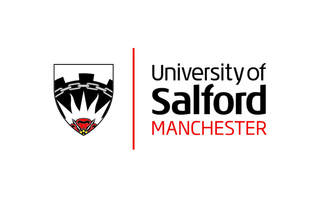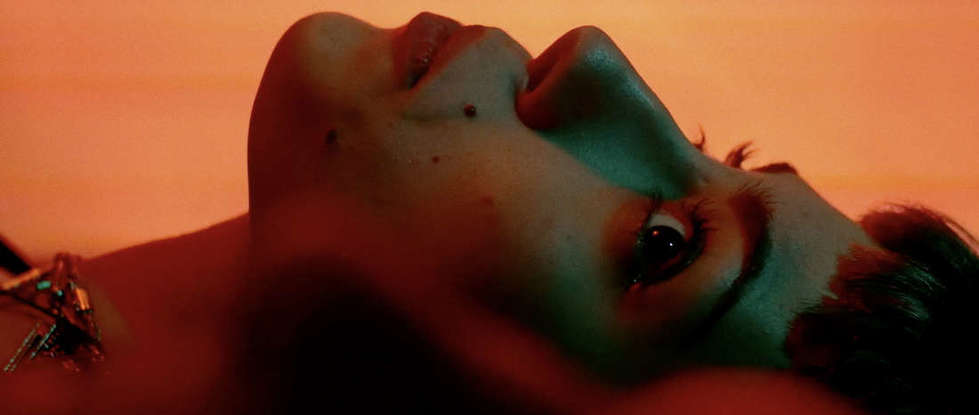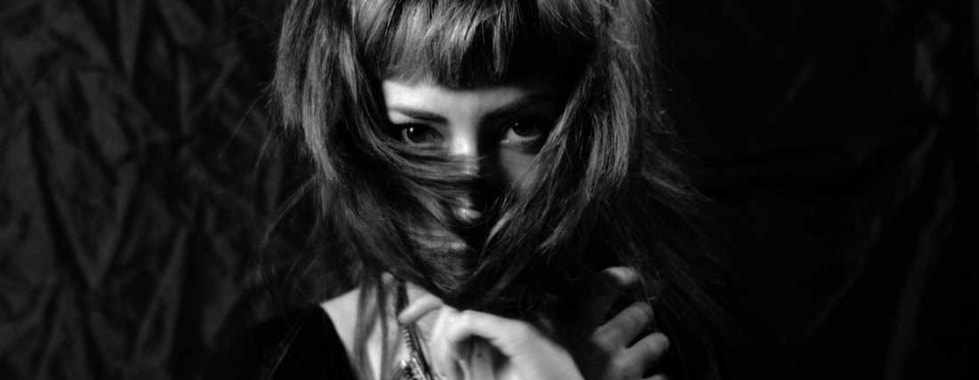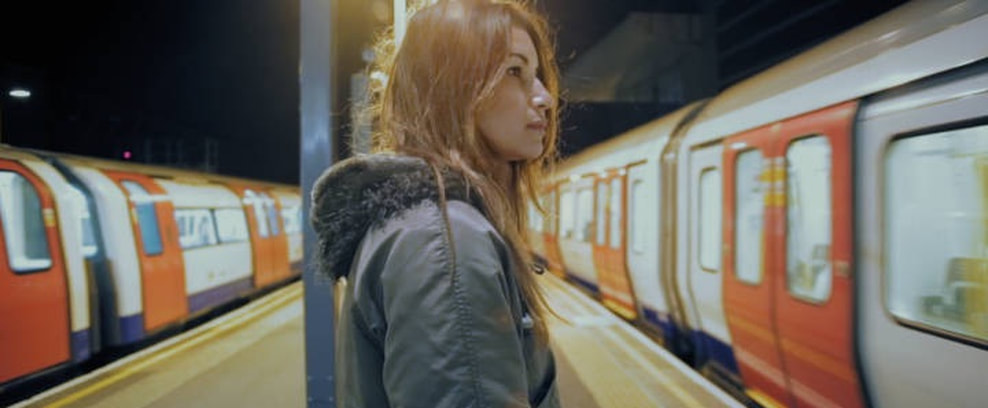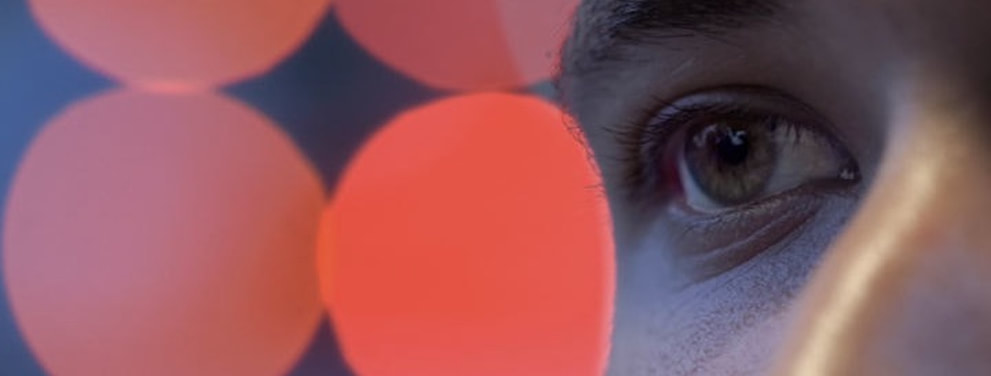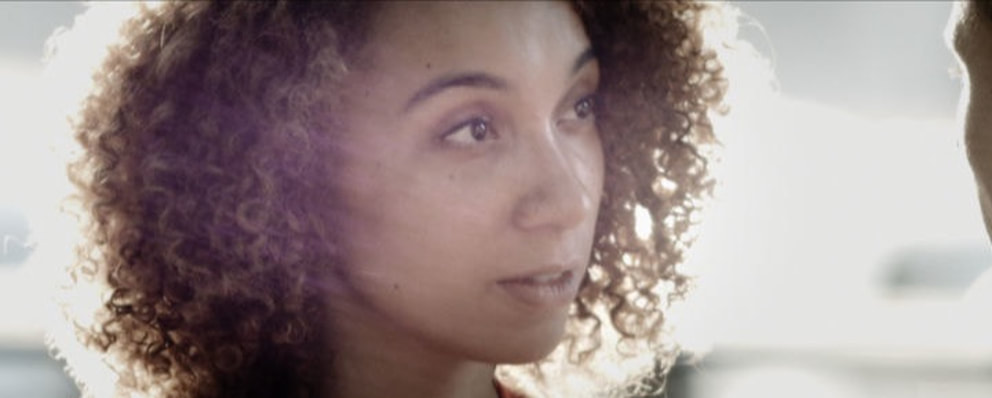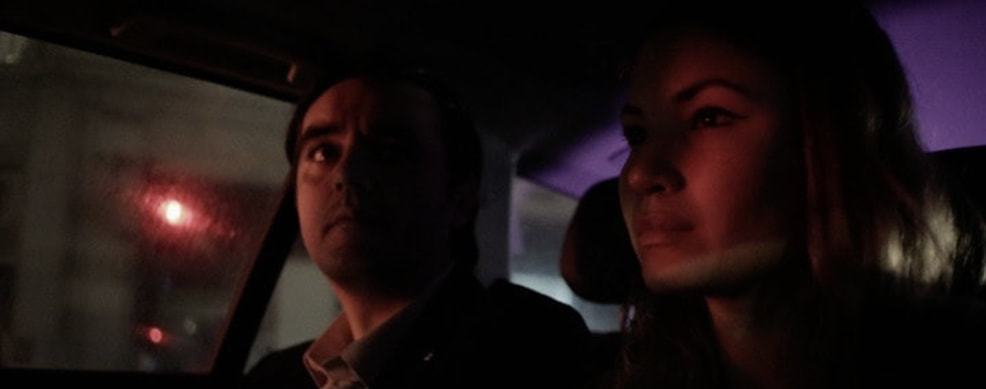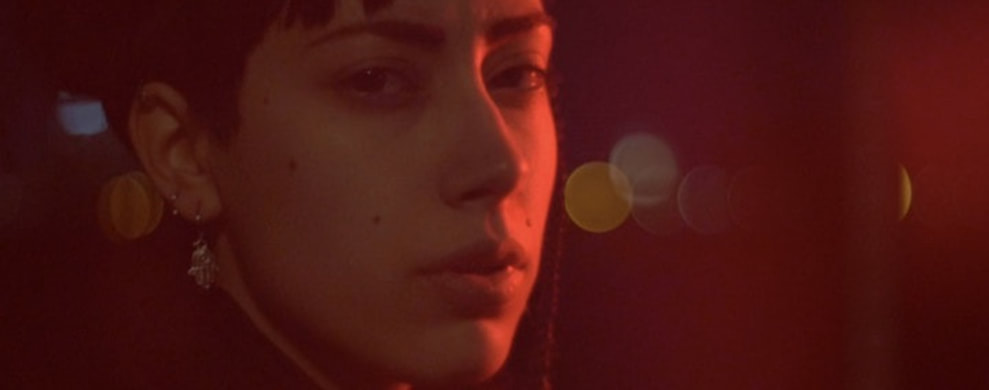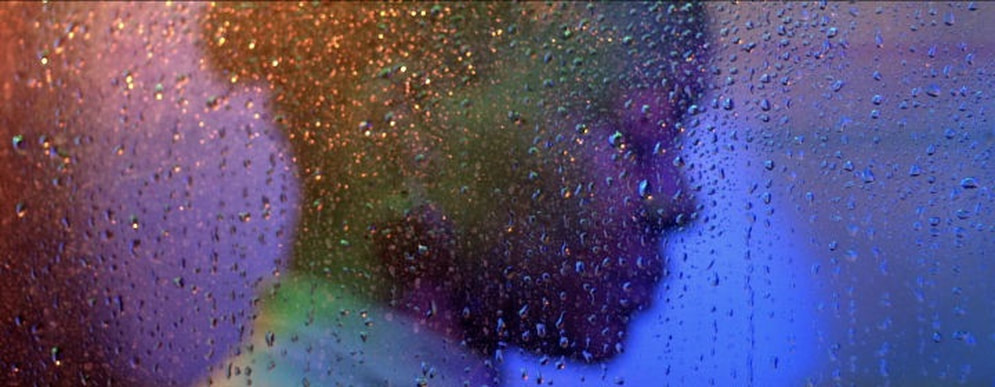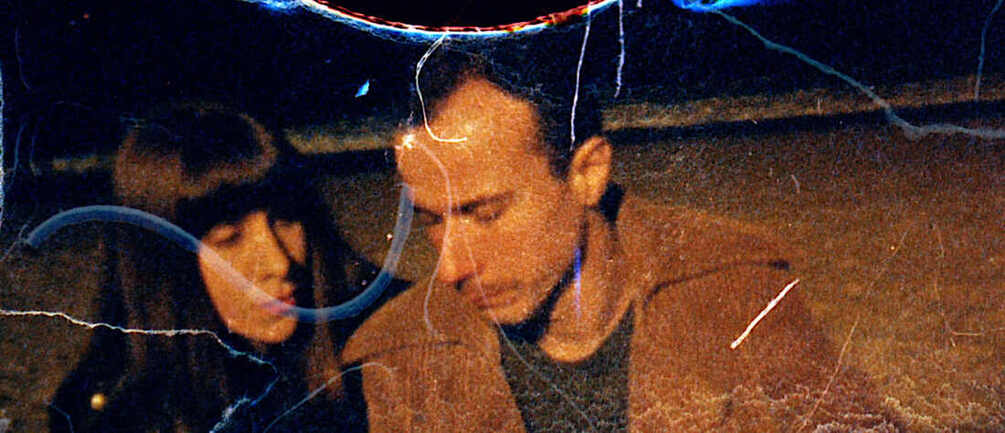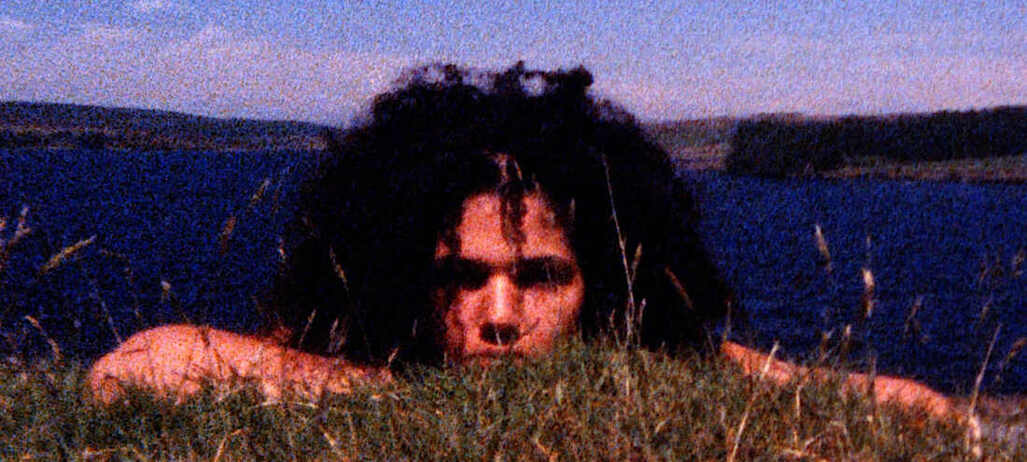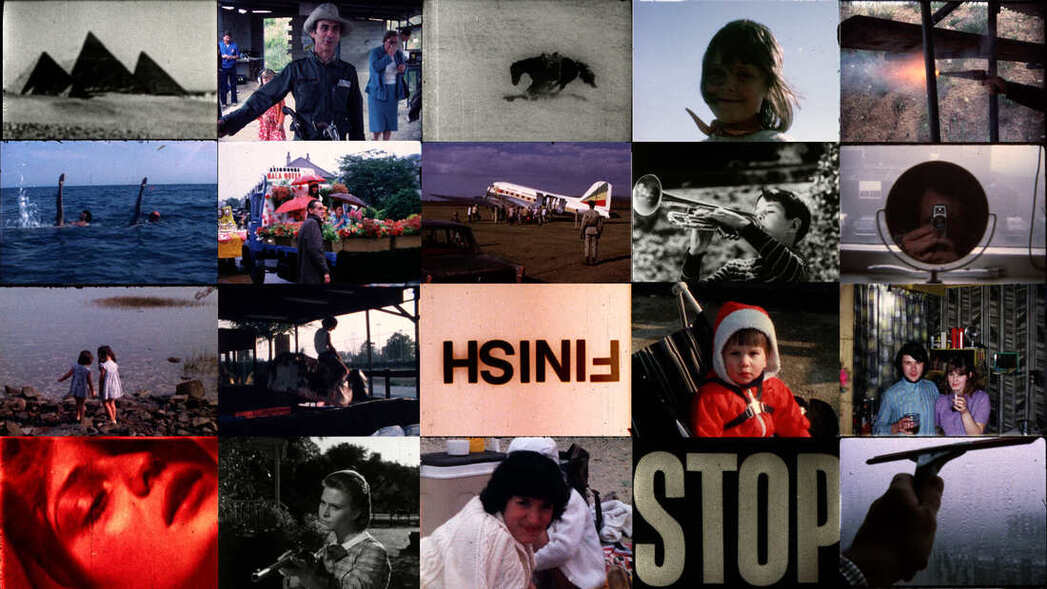This is a film project that I worked on between 2015 and 2019, forming a part of my doctoral research at the University of Salford, funded by the AHRC, and entitled 'Affective Cinema: Between Style, Chance and the Moving Body'.
Trailer Music: Rob Szeliga
Performers: Leila Ladhari, Theodor Spiridon, Hannah Cecily, Federica Marilotti, Sebastian Badarau, Megan Hatto, Marie Johnson
Performers: Leila Ladhari, Theodor Spiridon, Hannah Cecily, Federica Marilotti, Sebastian Badarau, Megan Hatto, Marie Johnson
At the heart of the project is the concept of affective significance, which represents subtle-yet-emphatic, ‘magic’ moments in film, where aspects of style coincide with a unique instant of performance and a contingent manifestation of reality. Affective significance is an audio-visual meaning that is located outside of language, knowledge and (inter-subjective) communication, a meaning that is felt before it can be thought. The practice seeks to expand the potential of cinema by creating suitable conditions for affective significance to emerge through innovative work with film performance and cinematography, and multiple post-production methods. This results in a series of short films – Affective Signs – as well as the development of unique directorial methods and visual approaches to non-narrative film, and theoretical contributions to the debates surrounding film performance and philosophy.
The project has been filmed in stages, so that each new stage can be enhanced by the preceding one, and, in this way, a new, unexpected creative level can be reached each time. It is a bit like walking through a door into a new room and then finding, in this very room, another door of discovery leading to a yet another unknown room. Five stages of practice have been conducted, resulting in 12 Affective Sign films.
Five stages of practice have been conducted, resulting in 1o Affective Sign films. I work solely on all creative aspects, while depending on significant collaborations with performers and music composers/sound designers.
Stage 1 was filmed in April 2016 and consisted of a workshop with a group of performers, in which directorial techniques were experimented with and collaborations with performers tested for upcoming stages. This stage resulted in Affective Signs #1 and #2
Stage 2 was filmed in August 2016 on various locations around London, and included the work on two visual films and two dialogue films, Affective Signs #3, #4, #5, #6.
Stage 3 was filmed in May 2017, and mainly based in another workshop with performers, but with a radically enhanced approach to both the lighting set-up and the directorial methods, building on the knowledge and understanding reached through the previous stages, resulting in Affective Sign #8. This stage also involved further location experimentation that resulted in a visual film Affective Sign #7.
Stage 4 was filmed in January 2018, on a one-day trip to Barcelona with a pair of performers who had never met before, but remained in character for the entire duration of the trip (or rather, being devoid of any demonstrable ‘character’, including their normal, habitual ‘self’). The entire trip and its unpredictable occurrences were filmed in combination of DSLR, iPhone, Blackmagic Cinema Camera and Super 8mm film stock, resulting in a rich, playful aesthetic of Affective Sign #9.
Stage 5 was filmed during a six-month residency at the arts-centre FACT in Liverpool. A casting was conducted at FACT with members of the public with no prior acting experience, and three selected performers subsequently took part in a three-day filming in Wales, resulting in Affective Sign #10. Further two films, the Found Affective Sign and the Affective Cinema collage, also emerged during this final stage.
Please see below a more detailed description of the individual Affective Signs.
Five stages of practice have been conducted, resulting in 1o Affective Sign films. I work solely on all creative aspects, while depending on significant collaborations with performers and music composers/sound designers.
Stage 1 was filmed in April 2016 and consisted of a workshop with a group of performers, in which directorial techniques were experimented with and collaborations with performers tested for upcoming stages. This stage resulted in Affective Signs #1 and #2
Stage 2 was filmed in August 2016 on various locations around London, and included the work on two visual films and two dialogue films, Affective Signs #3, #4, #5, #6.
Stage 3 was filmed in May 2017, and mainly based in another workshop with performers, but with a radically enhanced approach to both the lighting set-up and the directorial methods, building on the knowledge and understanding reached through the previous stages, resulting in Affective Sign #8. This stage also involved further location experimentation that resulted in a visual film Affective Sign #7.
Stage 4 was filmed in January 2018, on a one-day trip to Barcelona with a pair of performers who had never met before, but remained in character for the entire duration of the trip (or rather, being devoid of any demonstrable ‘character’, including their normal, habitual ‘self’). The entire trip and its unpredictable occurrences were filmed in combination of DSLR, iPhone, Blackmagic Cinema Camera and Super 8mm film stock, resulting in a rich, playful aesthetic of Affective Sign #9.
Stage 5 was filmed during a six-month residency at the arts-centre FACT in Liverpool. A casting was conducted at FACT with members of the public with no prior acting experience, and three selected performers subsequently took part in a three-day filming in Wales, resulting in Affective Sign #10. Further two films, the Found Affective Sign and the Affective Cinema collage, also emerged during this final stage.
Please see below a more detailed description of the individual Affective Signs.
The project was supervised by Dr Joanne Scott and Dr Martin Flanagan.
affective sign #1
|
Performers: Federica Marilotti, Katie-Rose Spence, Marcus Goodwille, Jasmine Raymond, Leila Ladhari, Sebastian Badarau, Perry Cooke, Khaleila Hisham
Music (Version 1): Jan Sikl Music and Sound Design (Version 2): Rob Szeliga Colourist: Antonio La Torre 2nd camera: Angela Awoyemi |
The Affective Sign is a film structure that combines aspects of cinematic style, nuances of performance (which film has the unique ability to reveal to us) and elements of chance (which film has the unique ability to capture). When all these attributes align in an interesting but unpredictable way, a feeling of meaning can be produced: a moment of cinema that is engaging and captivating without trying to tell a story or communicating something specific or intentional through the film. The course of this research project has been to try to explore the potential of this feeling of meaning in variety of ways, producing the films gradually, so that their very sequence becomes a testimony to the process of discovery that has taken place.
Affective Sign #1 arose from a casting workshop with a group of performers. In the workshop, the element of chance was significantly reduced, as the greatest source of chance is the wider reality, which is markedly absent in the studio environment. This reduction also allowed for more freedom in exploring and testing methods of directing performers, and constructing visual style through lighting. Although the workshop revolved around dramatic scenes based on simple dialogue and monologue scripts and other spoken improvisation, this film zeroes in on the unplanned moments ‘in between’, the pure being and nuanced movements of the body and the face, which help to create a sense of a feeling of meaning.
Affective Sign #1 arose from a casting workshop with a group of performers. In the workshop, the element of chance was significantly reduced, as the greatest source of chance is the wider reality, which is markedly absent in the studio environment. This reduction also allowed for more freedom in exploring and testing methods of directing performers, and constructing visual style through lighting. Although the workshop revolved around dramatic scenes based on simple dialogue and monologue scripts and other spoken improvisation, this film zeroes in on the unplanned moments ‘in between’, the pure being and nuanced movements of the body and the face, which help to create a sense of a feeling of meaning.
AFFECTIVE SIGN #2
One of the key methods employed in this research project is the welcoming of chance at every possible level. For example, the films are never preconceived as finished structures: I never enter the filming process with a specific idea for what I want to achieve or what I want the resulting piece to be. Rather, I would decide on initial stylistic choices, as well as on the directorial methods I want to test or explore, or write down some random lines of dialogue to get us started. The rest then evolves organically in the moment of filming, whether on the basis of spontaneous or intuitive decisions, or based on chance alone. The individual films are only born during the editing process – structured based on interesting (sometimes even magical) moments where chance, performance and style align in an unpredictable way. And more often than not, these moments are discovered for the first time during the editing, as the camera always captures more than we can initially see.
Affective Sign #2 relies on the same material as Affective Sign #1, but it is structured on the basis of a simple narrative monologue written for the workshop. The film is nevertheless edited in the same way as the rest of the project: it focuses on strange or interesting moments of performance, rather than prioritising the overall narrative or dramatic coherence. Here the aspects of style and chance are less dominant, and instead the film oscillates around the sense of storytelling preserved from the script. In this way, it explores a certain narrative boundary of an Affective Sign, while hovering around the point where the story and the affective significance (the audio-visual feeling of meaning outside of direct communication) diverge or clash.
Affective Sign #2 relies on the same material as Affective Sign #1, but it is structured on the basis of a simple narrative monologue written for the workshop. The film is nevertheless edited in the same way as the rest of the project: it focuses on strange or interesting moments of performance, rather than prioritising the overall narrative or dramatic coherence. Here the aspects of style and chance are less dominant, and instead the film oscillates around the sense of storytelling preserved from the script. In this way, it explores a certain narrative boundary of an Affective Sign, while hovering around the point where the story and the affective significance (the audio-visual feeling of meaning outside of direct communication) diverge or clash.
affective sign #3
|
Performers: Leila Ladhari, Jasmine Raymond, Khaleila Hisham, Theodor Spiridon
Music (Version 1): Jan Sikl Sound Design (Version 2): Rob Szeliga Colourist: Antonio La Torre |
After the initial workshop (resulting in Signs #1 and #2), I wanted to test some of the new methods in real environments, introducing an element of radical unpredictability: the city. It was important to stick to the pattern of producing both dramatic scenes involving dialogue and visual work without overt interaction between performers. The dramatic aspect allows for the exploration of more complex modes of performance that can lead to the production of affective significance (the feeling of meaning). The visual work invites a more organic and intuitive filming process: a simple flowing through space without an overt sense of dramatic engagement between the performers.
Affective Sign #3 is a visual film, following a group of performers through the London Underground system. Their performance stems from simply being in the moment, being sensitive to the environment, and letting all sights, sounds and scents to affect them and vibrate through their bodies, while moving around freely and intuitively. The camera follows them wherever they go, and they feel the camera’s presence, feeling its look, being affected by it, and looking back. This is the basic approach to all performance on the project, as by prioritising sensual stimuli in the present moment over thoughts and intentions, it is possible to bring the performer just a little bit closer to reality as it becomes, unpredictably, in front of the lens of the camera – a lens that is an inherent part of this reality. The two sound versions produced by two distinct music composers/sound designers demonstrate how the affect in the image (the non-specific emotion) is open and alive, and can be subsequently ‘locked’ into a very different overall mood and tone.
Affective Sign #3 is a visual film, following a group of performers through the London Underground system. Their performance stems from simply being in the moment, being sensitive to the environment, and letting all sights, sounds and scents to affect them and vibrate through their bodies, while moving around freely and intuitively. The camera follows them wherever they go, and they feel the camera’s presence, feeling its look, being affected by it, and looking back. This is the basic approach to all performance on the project, as by prioritising sensual stimuli in the present moment over thoughts and intentions, it is possible to bring the performer just a little bit closer to reality as it becomes, unpredictably, in front of the lens of the camera – a lens that is an inherent part of this reality. The two sound versions produced by two distinct music composers/sound designers demonstrate how the affect in the image (the non-specific emotion) is open and alive, and can be subsequently ‘locked’ into a very different overall mood and tone.
affective sign #4
|
Performers: Leila Ladhari, Jasmine Raymond, Khaleila Hisham, Theodor Spiridon
Music and Sound Design: Jack Foran Colourist: Antonio La Torre |
One of the key methods used to activate chance is to film constantly and often on multiple cameras, so that unpredictable things can be captured. I had designed a custom camera shoulder rig for this stage of practice, allowing me to mount two cameras side-by-side, while filming on the go. One of the cameras was running in slow motion at a ‘zoomed-in’ focal length and capable of focusing at a very close distance, while the other captured a more standard image. This variation has led to the production of two very different images obtained from almost an identical perspective, creating more opportunities for affective significance to emerge. The difference between the shots also demonstrates that the sense of reality captured within a moving image is inseparable from the qualities of the camera, making space and style likewise inseparable. This visual homogeneity contributes to the strange, magical reality of the cinematic image: merging the real unpredictable movement of the world with creative aspects of visual style.
Affective Sign #4 is the product of the same stage of filming as the previous piece, but while the environment of the London Underground has visually unified Affective Sign #3, this film has nothing particular joining it together. There is no sense of pattern or external structure in this piece, other than the four performers appearing throughout, and the slice of real time and place that coincided with the making of the film. The work is shaped by random passage through a variety of visually stimulating locations in London, as much as it is defined by stylistic choices about camera movement and framing. The music and sound design play a major part in amplifying the feeling of meaning in the images, but the sound element always grows out of the image, being guided and inspired by the particular ‘visual feelings’, as if discovered inside the silence of the film image.
Affective Sign #4 is the product of the same stage of filming as the previous piece, but while the environment of the London Underground has visually unified Affective Sign #3, this film has nothing particular joining it together. There is no sense of pattern or external structure in this piece, other than the four performers appearing throughout, and the slice of real time and place that coincided with the making of the film. The work is shaped by random passage through a variety of visually stimulating locations in London, as much as it is defined by stylistic choices about camera movement and framing. The music and sound design play a major part in amplifying the feeling of meaning in the images, but the sound element always grows out of the image, being guided and inspired by the particular ‘visual feelings’, as if discovered inside the silence of the film image.
affective sign #5
|
Performers: Jasmine Raymond, Theodor Spiridon
Music: Jan Sikl Colourist: Antonio La Torre 2nd camera: Angela Awoyemi |
Affective Sign #5 is a short dramatic scene, involving a simple situation: a fundraiser stops a passer-by on a busy street, in order to pitch to him a charitable cause. He nevertheless takes this as an excuse for a clumsy and tone-deaf (and perhaps a rather disturbing) wooing attempt. This isn’t quite a story, although the dialogue itself follows a certain back-and-forth logic, building up a context of a dramatic situation. However, since the aim was to produce affective significance (a feeling of meaning), rather than to focus on coherent (conventional) drama, all creative decisions beyond the scripted dialogue were motivated by creating interesting, strangely captivating moments where chance, nuances of performance and elements of cinematic style coincide.
The scene was filmed on an extreme telephoto lens from a considerable distance. This separation between the scene and the camera lead to a few interesting effects: the narrow close-up frame around each performer was often and randomly broken by abstract, out-of-focus figures of passers-by walking down the busy street, which added an element of unpredictability. The perspective of the image was totally flattened by the camera distance, creating a strange, unreal feel to the intimate close-up shots, enhanced by the subsequent re-dubbing of the dialogue at a very close distance to the microphone. This audio-visual combination results in a dissonance between the un-staged reality of the busy street, and the artificial, stylistic manipulation of the image. This dissonance is enhanced further by music that connects to these unexpected feelings in the image, which have nothing to do with the dramatic meaning of the scene. The performance often focuses on disconnected nuances of behaviour and expression, rather than dramatic coherence. The overall effect this creates can perhaps be described as ‘defamiliarised intimacy’.
The scene was filmed on an extreme telephoto lens from a considerable distance. This separation between the scene and the camera lead to a few interesting effects: the narrow close-up frame around each performer was often and randomly broken by abstract, out-of-focus figures of passers-by walking down the busy street, which added an element of unpredictability. The perspective of the image was totally flattened by the camera distance, creating a strange, unreal feel to the intimate close-up shots, enhanced by the subsequent re-dubbing of the dialogue at a very close distance to the microphone. This audio-visual combination results in a dissonance between the un-staged reality of the busy street, and the artificial, stylistic manipulation of the image. This dissonance is enhanced further by music that connects to these unexpected feelings in the image, which have nothing to do with the dramatic meaning of the scene. The performance often focuses on disconnected nuances of behaviour and expression, rather than dramatic coherence. The overall effect this creates can perhaps be described as ‘defamiliarised intimacy’.
affective sign #6
|
Performers: Leila Ladhari, Sebastian Badarau
Voice: Federica Marilotti, Theodor Spiridon Music and Sound Design: Jack Foran Colourist: Antonio La Torre 2nd camera: Angela Awoyemi |
Affective Sign #6 was filmed throughout one Friday night in Central London with two performers on the backseat of a car. Similarly to the previous Sign, this film combines a scripted dialogue with un-staged, unpredictable elements of reality. It is a simple dramatic situation: two relative strangers sharing a taxi from a nightclub, presumably heading for a one-night stand. Similarly to the previous Sign, it focuses on the shifting dynamics of power between a man and a woman. However, here the scripted dialogue was very sparse and much less coherent and logical, leading to many unexpected, improvised moments to arise from it. This has allowed the edited film to diverge as much as possible from the initial narrative premise: the film itself was discovered through the editing process, structured by brief moments where chance, elements of cinematic style and unpredictable nuances of performance coincide, in order to create a feeling of meaning.
The ability to capture chance was maximised by filming on three cameras simultaneously, producing an excessive amount of footage. Using low-light sensitive cameras and lenses then allowed for a complex play of light to enter the car from the outside traffic, as we passed randomly through the city. In this way, it was impossible to predict how captivating moments of performance would coincide with ‘stray light’ falling expressively on the performers’ faces, yet the sheer amount of footage generated strong moments of affective significance. The dialogue was later re-dubbed by a pair of different performers, who knew nothing about the film and had not seen a single image from it. This pushed the method of stylistic manipulation from the previous film even further, while emphasising the fragmentary nature of the Affective Sign.
The ability to capture chance was maximised by filming on three cameras simultaneously, producing an excessive amount of footage. Using low-light sensitive cameras and lenses then allowed for a complex play of light to enter the car from the outside traffic, as we passed randomly through the city. In this way, it was impossible to predict how captivating moments of performance would coincide with ‘stray light’ falling expressively on the performers’ faces, yet the sheer amount of footage generated strong moments of affective significance. The dialogue was later re-dubbed by a pair of different performers, who knew nothing about the film and had not seen a single image from it. This pushed the method of stylistic manipulation from the previous film even further, while emphasising the fragmentary nature of the Affective Sign.
affective sign #7
|
Performers: Federica Marilotti, Hannah Cecily, Theodor Spiridon, Megan Hatto
Music and Sound Design (Version 1): Jack Foran Music and Sound Design (Version 2): Rob Szeliga 2nd camera: Kim Gratton |
Slow motion has been identified since the early stages of the project as a potent source of affective significance. Slow motion amplifies film’s inherent and unique capacity to reveal something more of reality that would otherwise be missed by the naked eye, or would simply seem entirely ordinary to it. Combined with the other potent revelatory aspect of film – the close-up shot – and further stylistic choices, slow motion can uncover minute details of movement of the performer’s body and their facial expressions, as well as the complexity of movement of the wider reality.
Affective Sign #7 combines predominantly slow motion shots from experimental filming sessions coinciding with the second performance workshop (the main part of which lead to the production of Affective Sign #8). One session involved the filming of a performer in slow motion during the Pillow Fight Day event in London. The performer was framed only in close-up in a narrow field of focus (anything in the foreground and background is out of focus by combining appropriate aperture and focal length). Because of this framing choice, the complex pillow-fighting movements that surround her become more abstract – becoming removed from their ordinary context and emotion. In this way, the slow motion shot captures (chaotic) movement, aligning it randomly with the movement and framing of the camera (which was also very much subject to the unpredictable forces of the enveloping crowd). The performer is also part of this moment, sensitive to the forces surrounding her without setting her experience into a specific context. She is simply becoming with the moment, and the slow-motion close-up shot amplifies this brief alignment of external and internal becomings as a feeling of meaning.
Affective Sign #7 combines predominantly slow motion shots from experimental filming sessions coinciding with the second performance workshop (the main part of which lead to the production of Affective Sign #8). One session involved the filming of a performer in slow motion during the Pillow Fight Day event in London. The performer was framed only in close-up in a narrow field of focus (anything in the foreground and background is out of focus by combining appropriate aperture and focal length). Because of this framing choice, the complex pillow-fighting movements that surround her become more abstract – becoming removed from their ordinary context and emotion. In this way, the slow motion shot captures (chaotic) movement, aligning it randomly with the movement and framing of the camera (which was also very much subject to the unpredictable forces of the enveloping crowd). The performer is also part of this moment, sensitive to the forces surrounding her without setting her experience into a specific context. She is simply becoming with the moment, and the slow-motion close-up shot amplifies this brief alignment of external and internal becomings as a feeling of meaning.
Affective sign #8
|
Performers: Astrid Bellamy, Anna Kan, Kayt Webster-Brown, Hannah Cecily, Marie Johnson, Michal Szpak, Fotina Papatheodorou, Theodor Spiridon
Music (Version 1): Jan Sikl Sound Design (Version 2): Rob Szeliga 2nd camera: Kim Gratton, Sam Chene |
Affective Sign #8 is building on the experience of the first workshop with performers (which resulted in Signs #1 and #2), and also on the other ‘real-world films’ that were made in between the workshops. The controlled studio environment (a basement university classroom in fact) allowed for an expanded complexity of lighting set-ups. This complexity here included three camera angles, each with a distinct sense of atmosphere created solely by light, capturing simultaneously a conversation between two performers. The complexity also resulted in unpredictability, especially as the background of one of the angles was formed by a projected image fed from that very camera, creating a feedback loop of light. As many of the light sources in the scene were gradually (or randomly) changing colour or intensity, these changes became radically intensified through the feedback loop.
The workshop involved eight performers delivering in pairs ten simple dialogue scripts in two-hour, meditative sessions, involving experimental directorial techniques developed throughout the project. The entire sessions were filmed, and the performers were not given the scripts in advance, so that no personal preparation was involved on their part, and instead the entire evolution of the extended dramatic moment was captured on camera. Another pair of performers off camera were feeding them the lines, allowing the on-screen performers to simply be in the moment. Halfway through each session, the dialogue would become improvised, building on the structure retained from the scripts. The most captivating instances of performance from across all sessions and camera angles were subsequently selected and combined, giving rise to a new disconnected, alogical structure, forging affective rather than narrative meaning.
The workshop involved eight performers delivering in pairs ten simple dialogue scripts in two-hour, meditative sessions, involving experimental directorial techniques developed throughout the project. The entire sessions were filmed, and the performers were not given the scripts in advance, so that no personal preparation was involved on their part, and instead the entire evolution of the extended dramatic moment was captured on camera. Another pair of performers off camera were feeding them the lines, allowing the on-screen performers to simply be in the moment. Halfway through each session, the dialogue would become improvised, building on the structure retained from the scripts. The most captivating instances of performance from across all sessions and camera angles were subsequently selected and combined, giving rise to a new disconnected, alogical structure, forging affective rather than narrative meaning.
affective sign #9
Affective Sign #9 resulted from a 36-hour trip to Barcelona with a pair of performers. There wasn’t a specific plan or story, other than the journey itself, to a place where neither of us had ever been. In this way, the travel became a continuous source of chance, guided by the desire to produce captivating images, but otherwise exposing us constantly to the unknown. I filmed most of the time, and so the resulting film is a radical condensation of the amount of material produced. The footage nevertheless remains organised in a chronological order, so that the trip, as it happened in reality, is what ultimately structures the film. While this chronology creates a coherent order of events, like a story, this sense of story coincides entirely with what really happened. And yet, the resulting film is clearly fiction, not a documentary. The film rather inhabits a space between documentary and fiction, exploring an aesthetically-real, affective dimension of becoming, where image and reality entwine, forming a new reality of the image.
Instead of being their ordinary selves or adopting a fictional character, the performers became, for the entire trip, what I term ‘affective characters’. Being an affective character means being attuned to one’s senses, allowing everything outside to affect the inside. To be an affective character means to be present in the moment and to act spontaneously, guided by the impulse of the moment, without planning or thinking ahead. In this way, the performer can participate a bit more in the flow of reality, rather than being divided from it (in order to become individual). For this reason, being an affective character is perhaps a more real state of being than both being as one’s habitual character (as one usually behaves) and as the standard adopted character of fictional drama. Being an affective character means becoming as one with the world.
Instead of being their ordinary selves or adopting a fictional character, the performers became, for the entire trip, what I term ‘affective characters’. Being an affective character means being attuned to one’s senses, allowing everything outside to affect the inside. To be an affective character means to be present in the moment and to act spontaneously, guided by the impulse of the moment, without planning or thinking ahead. In this way, the performer can participate a bit more in the flow of reality, rather than being divided from it (in order to become individual). For this reason, being an affective character is perhaps a more real state of being than both being as one’s habitual character (as one usually behaves) and as the standard adopted character of fictional drama. Being an affective character means becoming as one with the world.
affective sign #10
The final stage of filming for the project took place as part of a six-month residency at FACT in Liverpool. Three performers with no previous experience emerged from the casting process to take part in a filming in Wales. Similarly to Affective Sign #9, the performers stayed ‘in character’ for the entire duration of the filming as affective characters. Instead of representing a character (whether a fictional character, or their usual, habitual self), they represented the becoming of the present moment, like a sort of ‘affective mirror’. Similarly to the previous Sign, the filming was defined by a journey to a location that we had never been to before, but here it was a secluded cottage in Wales, and we drove there rather than flew. In fact, we made the over-night trip twice with a pair of performers, swapping one of them for the second day, so to capture the radical difference between the two journeys to an identical destination. It is hard to separate the distinct emotional dynamic between each pair of performers and the completely new set of unpredictable events as they occurred on each occasion. Those two aspects of the filming were fundamentally related within the becoming of reality as we, and the camera, experienced it.
Affective Sign #10 is dominated by the use of sensitive Super8 film stock, which adds a high degree of noise and imperfection to the images, combining strangely with the Welsh countryside and coastline. It is a combination of two material aspects of reality, whether the natural environment (radically different to the city locations dominating all the previous Signs) or the physicality of the film emulsion with which the former coincides. Together, the scenery and the film stock create a new (aesthetic) reality of the image, transcending the original world, in order to reveal a reality that is equally less and more human – less and more real.
Affective Sign #10 is dominated by the use of sensitive Super8 film stock, which adds a high degree of noise and imperfection to the images, combining strangely with the Welsh countryside and coastline. It is a combination of two material aspects of reality, whether the natural environment (radically different to the city locations dominating all the previous Signs) or the physicality of the film emulsion with which the former coincides. Together, the scenery and the film stock create a new (aesthetic) reality of the image, transcending the original world, in order to reveal a reality that is equally less and more human – less and more real.
Found affective sign
Found Affective Sign is an experimental film physically spliced out of diverse found Super8 material onto a 400ft reel of film. The 60 reels of material, from which the film is edited, were obtained randomly on eBay. Rather than being edited based on meaning or narrative, the film brings together isolated visual moments, removing them from their ordinary context within reality or story. In these moments, elements in reality and aspects of the image randomly align to produce a sense of significance – a feeling of meaning. The film opens with a four-minute montage of various obscure dramas and cartoons, and the remainder is edited solely out of home movies.


